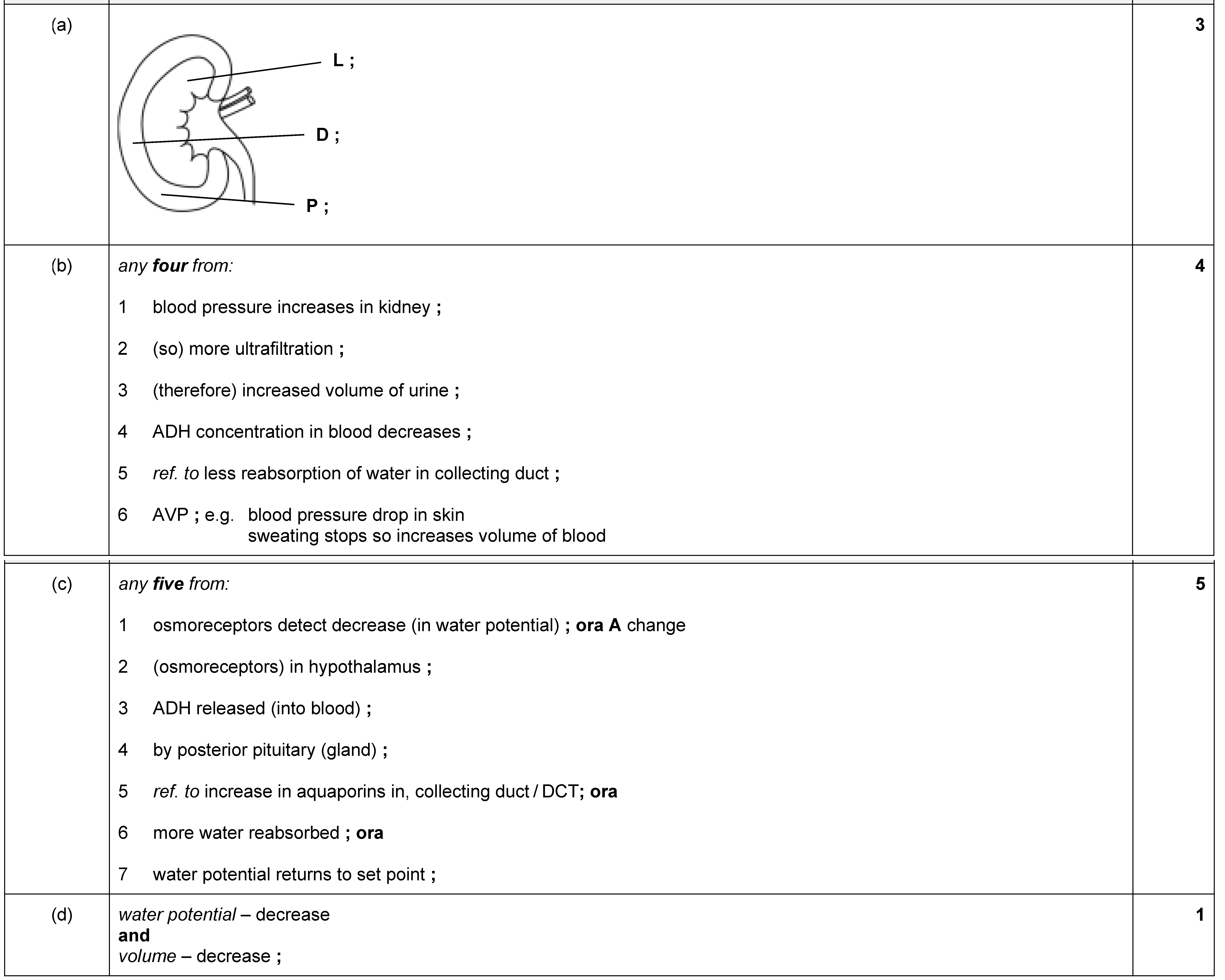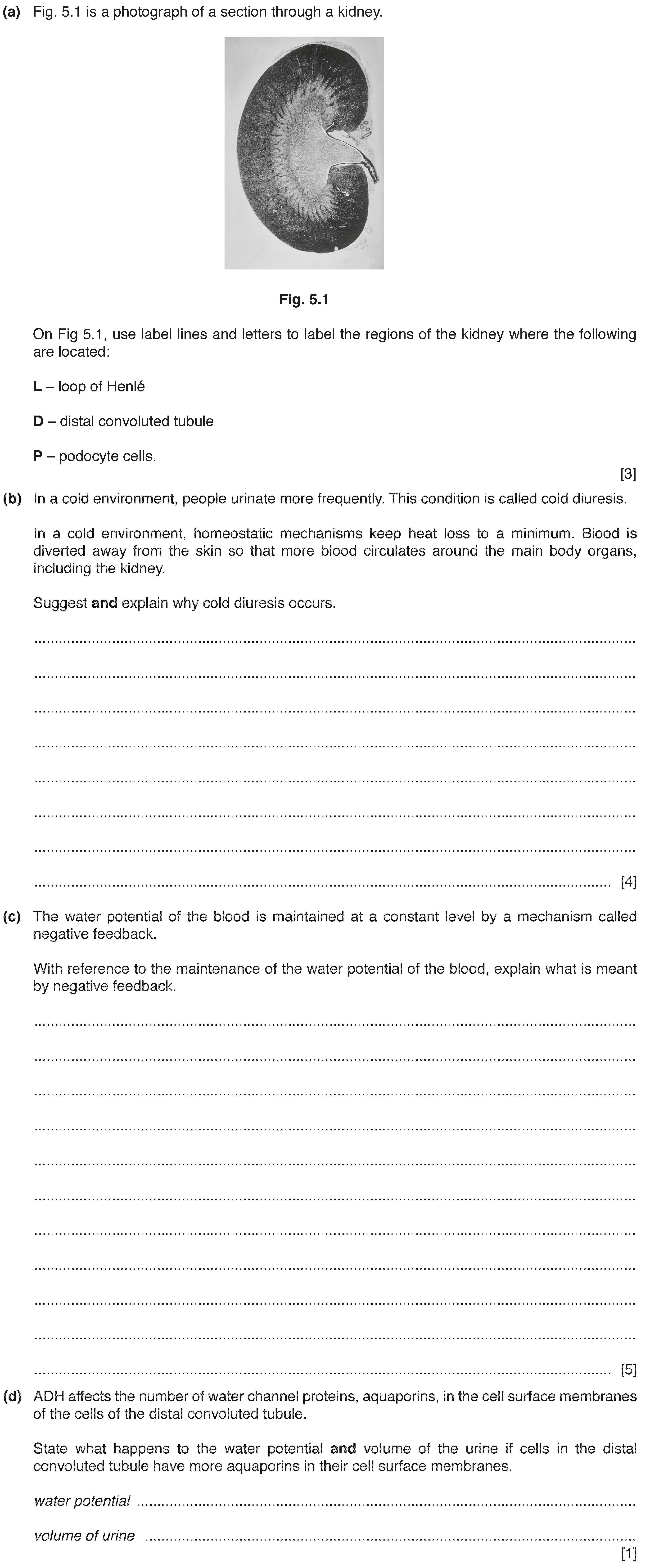
Q5:
AS & A Level Biology - 9700 Paper 4 2019 Summer Zone 3
Questions:
5/10

Topic: CH14 - HOMEOSTASIS
Solution



PRACTISE
Similar Questions

LEARN
Concepts with Sparky

More Questions from this Topic
Theory
CH14 - HOMEOSTASIS
(a) In mammals, blood glucose concentration is maintained around a set point so that the mammal can function efficiently. This is an example of homeos...
2024
 Summer
Summer
 Summer
Summer
 5
5
Theory
CH14 - HOMEOSTASIS
(a) Blood glucose concentration is maintained around a set point by homeostasis. Explain the principles of homeostasis.[4]
(b) Glycogen phospho...
2024
 Winter
Winter
 Winter
Winter
 4
4
Theory
CH14 - HOMEOSTASIS
(a) Fig. 1.1 is a diagram of part of a Bowman's capsule and a glomerular capillary.
(i) Identify structures A and B.
(ii) The glomerular filtrate ...
2024
 Winter
Winter
 Winter
Winter
 5
5
Theory
CH14 - HOMEOSTASIS
(a) Fig. 1.1 is a diagram of a nephron.
Label Fig. 1.1 using:
• one labelling line and the letter A to identify a region that contains urine
...
2024
 Spring
Spring
 Spring
Spring
 4
4
Theory
CH14 - HOMEOSTASIS
Osmoregulation is the control of the water potential of body fluids such as blood.
(a) Osmoreceptors and antidiuretic hormone (ADH) have an important...
2024
 Summer
Summer
 Summer
Summer
 4
4
Theory
CH14 - HOMEOSTASIS
The mammalian kidney is responsible for:
• the excretion of urea
• osmoregulation (the homeostatic control of the water potential of the b...
2024
 Winter
Winter
 Winter
Winter
 7
7
Theory
CH14 - HOMEOSTASIS
The kidney is an important organ of homeostasis. One role of the kidney is osmoregulation.
(a) Fig. 5.1 is a photomicrograph of part of a kidne...
2023
 Summer
Summer
 Summer
Summer
 8
8
Theory
CH14 - HOMEOSTASIS
(a) Fig. 1.1 is a drawing of a longitudinal section (LS) of a human kidney.
Use the letters A, B, C and D in Fig. 1.1 to complete Table 1.1.
Each ...
2023
 Spring
Spring
 Spring
Spring
 3
3
Theory
CH14 - HOMEOSTASIS
Amino acids are the monomers that are used to produce proteins in organisms. Amino acids also have other, non-protein, roles in the body.
(a) Fig. 7....
2023
 Summer
Summer
 Summer
Summer
 5
5
Theory
CH14 - HOMEOSTASIS
(a) (i) When blood glucose concentration decreases, glucagon is released by the pancreas into the blood and is transported to the cells.
Fig. 6...
2023
 Winter
Winter
 Winter
Winter
 2
2
More Questions from year 2019
MCQ
CH1 - CELL STRUCTURE
The actual length of a cell structure is 8 µm. Which steps are used to calculate the magnification of an electron micrograph of this cell structure?...
2019
 Summer
Summer
 Summer
Summer
 5
5
MCQ
CH1 - CELL STRUCTURE
What is the typical resolution of a microscope using daylight as a light source with a ×10 eyepiece lens and a ×40 objective lens?
2019
 Summer
Summer
 Summer
Summer
 4
4
MCQ
CH1 - CELL STRUCTURE
Two different types of cell, P and Q, were broken up using ultrasound and their contents analysed. Both types of cell contained small circular DNA. Th...
2019
 Summer
Summer
 Summer
Summer
 6
6
MCQ
CH1 - CELL STRUCTURE
Which features shown in the diagram can be present in viruses?
2019
 Summer
Summer
 Summer
Summer
 3
3
MCQ
CH2 - BIOLOGICAL MOLECULES
After boiling a sample of milk with Benedict’s solution, a yellow colour is observed. Which conclusion about the sample of milk is correct?
2019
 Summer
Summer
 Summer
Summer
 3
3
MCQ
CH2 - BIOLOGICAL MOLECULES
Which of the statements about polysaccharides can be used to describe amylose and cellulose?1. contains 1,4 glycosidic bonds2. contains 1,6 glycosidic...
2019
 Summer
Summer
 Summer
Summer
 3
3
MCQ
CH2 - BIOLOGICAL MOLECULES
Which diagram shows the formation of a peptide bond?
2019
 Summer
Summer
 Summer
Summer
 3
3
MCQ
CH3 - ENZYMES
In enzyme-catalysed reactions, the position of the amino acids found at the active site is important. During the synthesis of enzymes, amino acids are...
2019
 Summer
Summer
 Summer
Summer
 3
3
MCQ
CH2 - BIOLOGICAL MOLECULES
Which features affect the tensile strength of collagen?1 the helical structure of collagen chains2 the small R group of the amino acids in collagen3 t...
2019
 Summer
Summer
 Summer
Summer
 3
3
MCQ
CH3 - ENZYMES
A fixed volume of the enzyme catalase was added to a fixed volume of hydrogen peroxide solution. The diagram shows how the concentration of product ch...
2019
 Summer
Summer
 Summer
Summer
 3
3




 Share
Share




 Previous
Previous



